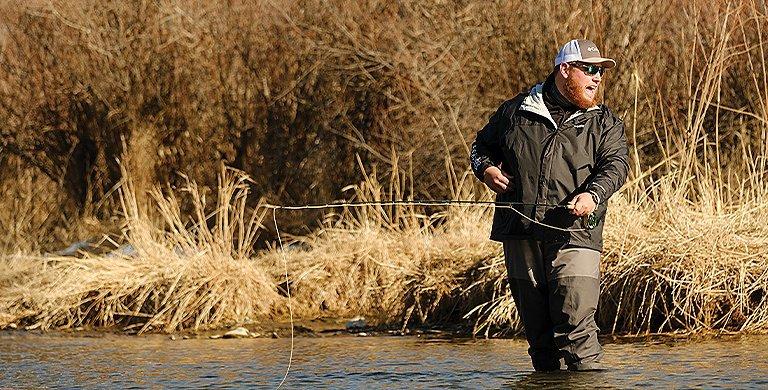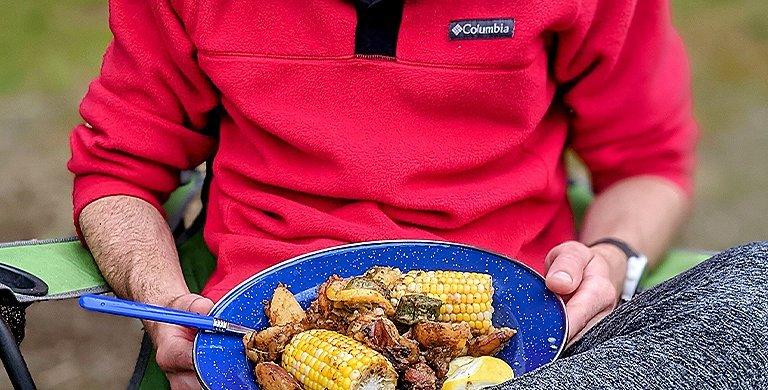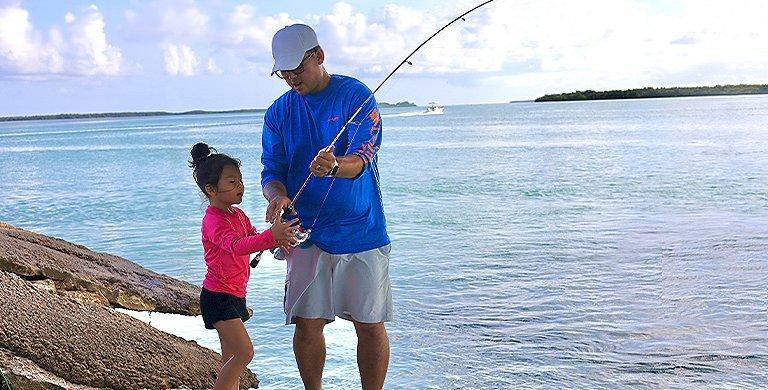OUTDOOR LIFE
13 Fun Facts About the Unique Sport of Curling
We reached out to a curler from the U.S. Olympic team to get the lowdown on this lesser-known sport
BY RACHEL CAVANAUGH
With the 2022 Winter Olympics on the horizon, eager fans are already talking about the graceful spins of figure skaters and the daring jumps of Alpine skiers. But there’s another winter sport that tends to receive less attention: curling. While the game has been around for a few centuries, it’s not well-known outside colder, icier climates.
So what exactly is curling? Well, simply put, the objective is to deliver a stone from one side of the ice to a scoring area on the other side. But where did curling originate? How is it played? And why is it called the “roaring game”? To help answer these and other questions, we reached out to Tara Peterson of the USA Curling National Team. The professional curler, who helped her team nab a bronze medal at the women’s curling world championship this past spring, shared all of her favorite fun facts.
So what exactly is curling? Well, simply put, the objective is to deliver a stone from one side of the ice to a scoring area on the other side. But where did curling originate? How is it played? And why is it called the “roaring game”? To help answer these and other questions, we reached out to Tara Peterson of the USA Curling National Team. The professional curler, who helped her team nab a bronze medal at the women’s curling world championship this past spring, shared all of her favorite fun facts.
1: Where is curling from? How did the sport begin?
Tara Peterson: Curling was invented in Scotland in the 16th century out on the frozen ponds. It was basically something to do on the pond in the wintertime. They’d take whatever kinds of stones they could find and literally just throw them down the ice sheets. I don't even know what they were using for brooms—whatever they were sweeping their decks with, I guess. Then slowly over time, they made the “house” and they started making better rocks that were all the same standard size.
2: What were the curling stones made of? How have they evolved?
Tara Peterson: In the beginning, it was literally whatever rocks they could find. Nowadays, curling stones are made out of a special granite that you can only find in two spots in the world—one is the Trefor Granite Quarry in Wales and the other is this uninhabited island off the coast of Scotland called Ailsa Craig. There they have this very special “blue hone” microgranite that doesn’t break when the two stones collide.
3: Why are some scientists puzzled by the physics of curling?
Tara Peterson: Apparently, it's an ongoing mystery that’s hard for physicists to understand. They can’t figure out why the rocks move like they do. I’m no physics major by any means, but basically, when you rotate the stones, they curl in the same direction that you rotate them in. This is very strange because for other objects in physics, when you spin them, they will curl in the opposite direction. No one knows why they do this, although there are a lot of theories. The most popular is that the force on the front of the rock causes some melting up front—this is very minimal, microscopic melting—that in turn causes greater friction of the back of the rock. This leads to the rock curling in that direction.
4: Curling is known as a very polite sport. What are some of the rules around etiquette?
Tara Peterson: Yes, curling is definitely a gentleman’s sport. Everyone is very polite—in that sense, it’s a lot like golf, which, funny enough, the Scots invented too. So if you're wanting to know why curlers are so polite, blame the Scottish. There are lots of customs. Before every game, for example, you shake your opponent's hands and wish them “good curling” or “good game.” Then at the end of the game—whether you got your butt kicked or you kicked butt—you say “good curling, good game,” and you shake hands again. In league play, there’s also still a tradition that the winners buy the losers beer and you all sit together to socialize and talk about the game.
5: What other unique customs do curlers practice?
Tara Peterson: Another thing that’s similar to golf is that you call penalties on yourself. So for instance, if you were to touch the stone while you're sweeping, it’s called a “burned rock” and it’s taken out of play. People around you might not be able to see that, but you would know that you did it, so you call the penalty on yourself. At the Olympics, they have sensors in the rocks, but traditionally, players call their own penalties.
6: How much do curling stones weigh? Are they difficult to move?
Tara Peterson: They weigh 42 pounds. However, you're not really lifting them, so that doesn't factor in too much. But you definitely need to be in shape to curl, at least at the competitive level. At the beer-drinking level, you can do whatever you want, but at the Olympics, it makes a huge difference. One thing that’s really important is balance and flexibility. You’re crouching down really low in that lunge position and you have to hold that lunge for a while. And sweeping requires a lot of cardio, as well as some strength.
7: What is the purpose of sweeping in curling? Is it hard?
Tara Peterson: You sweep in front of the stone to melt the ice so the rock can travel farther. You’re melting the ice at a microscopic level—there’s a thin layer of water and it makes the rock go farther. It’s a lot harder than you’d think to be an effective sweeper. It involves a lot of strength. You need to get as much body weight on the broom as possible without falling over and then move your broom as fast as you can.
8: Why do you wear two different shoes in curling?
Tara Peterson: There are two types of shoes—a slider and a gripper. The slider is made of Teflon or stainless steel, which makes it slippery. On the other foot, you have rubber on the bottom, which makes it a little bit more grippy. When you’re the person throwing the stone or delivering the rock and you’re down in that lunge position, your forward foot has the slider on it so you can push forward and glide along the ice. When you’re sweeping, you also have the option to put a gripper on the slider shoe—it’s this rubber thing that goes over the shoe—so now you have two grippy feet and you won’t be falling over.
9: What is the hogline in curling?
Tara Peterson: The hogline is the thick line in the front of the house, or “bullseye” in the end of the sheet. You can’t be holding the stone once you pass the hogline—you need to let go of the rock before you reach it when delivering the stone. If you don’t, then the rock is taken out of play. Similarly, on the further end of the sheet, the rock needs to come to rest after the hogline or the rock is taken out of play.
10: Why is curling called the “roaring game?” Are the stones really that loud?
Tara Peterson: It’s funny, because I don’t notice it, but my husband told me that the first time he ever watched me curl, he was surprised at how loud it was in there when the stones rolled over the ice. When you're watching it on TV, you don't think the rocks make much noise because of the commentators. But it’s true that when you're out on the ice, it’s kind of loud. I've just been doing it for so long that it doesn't faze me—it’s just kind of what it is. But yes, that’s where it gets its nickname the “roaring game.”
11: What is the ice like in curling? And what is “the pebble”?
Tara Peterson: The ice in curling isn’t smooth like hockey ice. It’s covered in little water droplets that make it kind of bumpy. This is called “the pebble.” The curling stones travel on the pebble—these water droplets—and that’s what makes it curl. Hockey ice, on the other hand, is completely flat. So if you played on that, you’d have no idea where the rock was going to go. This has to do with the physics of the game as well. A lot of people are surprised by how bumpy the texture is.
12: How hard is curling?
Tara Peterson: It’s a lot harder than it looks. When you’re watching professionals on TV, it looks easy. But then people try it and they fall all over the place. It takes precision. It’s kind of like putting in golf—you need to have the perfect stroke to get that ball in the hole. That said, you can play at any age or skill level. I’ve been playing in this league on Tuesday nights at the St. Paul Curling Club since I was in sixth grade and I’m still in the same league. There are 12-year-olds playing against 80-year-olds. That’s just how it is. Anybody can play against anyone. So it’s cool in that sense—it’s a lifetime sport.
13: What is the curling community like?
Tara Peterson: It’s great. Everybody is friends. If you walk into a curling club and you don’t know how to play, someone will probably offer to teach you. And if you join a league and you don’t know what you’re doing but your opponents do, they’re still going to help you. Then after the game, even if they just crushed you because you’re new, they’re going to take you out for beer and tell you how to get better. It’s a great community where everyone is nice to each other and we all want to help each other out.
Interested in learning more? Check out USA Curling



